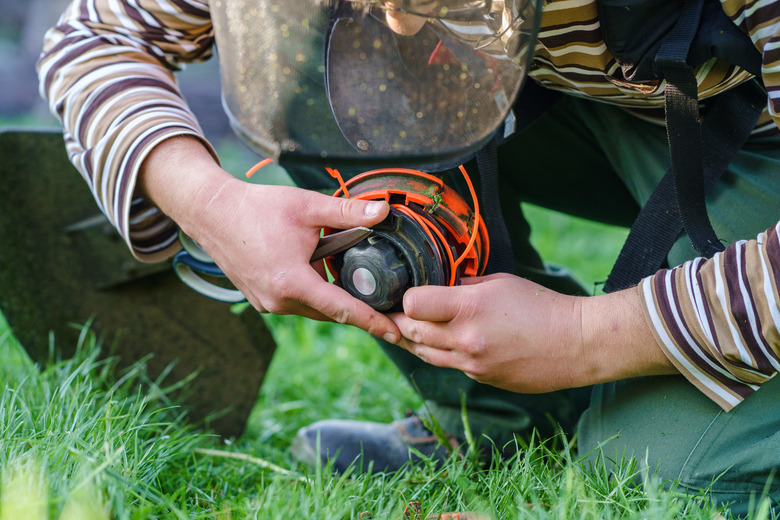How To Convert A String Trimmer To A Brush Cutter
We may receive a commission on purchases made from links.
Every gardener needs a weed whacker — more appropriately known as a string trimmer — for keeping weeds under control and doing general lawn and garden maintenance, but sometimes, you have a really tough job that a string trimmer can't handle. When you have to clear woody brush or mow through knee-high grass, a brush cutter is a better tool. Instead of spinning nylon strings, it has an actual steel blade, which makes it a type of long-handled saw, and as you would expect, that makes it a more dangerous tool.
It isn't always feasible to convert a string trimmer to a brush cutter, but when it is, there are two ways to do it. If your trimmer is equipped for it, you can separate the trimmer head and a section of the shaft and replace it with a brush-cutter attachment. If your trimmer doesn't have a shaft that comes apart, you can often unscrew the trimmer head and replace it with a brush-cutter blade. Brush cutters need more power than string trimmers, so with a few notable exceptions, you'll need a gas-powered string trimmer to make an effective brush cutter.
Using a Brush-Cutter Attachment
Using a Brush-Cutter Attachment
Some manufacturers offer convertible string trimmers, and you can recognize these by the locking nut or snap-together connection about midway up the shaft. Loosen the nut or press the spring-loaded release and the shaft separates into two parts. These manufacturers usually supply brush-cutter attachments, and it's always best to use the one supplied by the manufacturer of your trimmer rather than a generic one. Simply push the section of shaft with the cutter head onto the section with the trimmer motor and either snap them together or tighten the locking nut, and that's it.
Installing a Brush-Cutter Blade
Installing a Brush-Cutter Blade
If your trimmer shaft doesn't separate, you can still convert it to a brush cutter, but the procedure is a little more complex. You have to remove the trimmer head, and before you do this, it's important to disable the motor by pulling off the spark-plug wire, removing the battery or pulling the power plug. Set the trimmer on a flat surface with the head facing you and you're ready to start.
If you examine the trimmer head, you'll see a small hole. Insert a nail into the hole to stop the spindle from turning while you unscrew the trimmer head. The spindle has reverse threads, so you have to turn it clockwise to loosen it. After removing it, you may also have to unscrew and remove a shield plate, and at this point, the blade guard should also come off. If you have to remove the shield plate, replace it with the one that comes with the brush-cutter blade, and you may also have to install a new blade guard to accommodate the blade.
Install the blade along with any parts that come with it to stabilize it and screw on the retaining nut. Remember that you have to screw the nut counterclockwise to tighten it using a socket wrench to snug it securely.
Using a Brush Cutter Safely
Using a Brush Cutter Safely
A brush-cutter blade can throw rocks and wood chips in all directions at high speeds, so you need to wear protective equipment, including goggles, steel-toed shoes, gloves and heavy pants at a minimum. If you're working with a high-powered trimmer, you should wear a hard hat with a face shield.
A brush-cutter blade can kick back like a chainsaw; in fact, some brush-cutter blades are similar to saw chains. To prevent injury, keep the shaft fully extended away from your body and make sure no one is in the vicinity when you're working. Also, because the blade is metal, it can generate sparks, so avoid working in dry brush in remote areas where no water is available.
